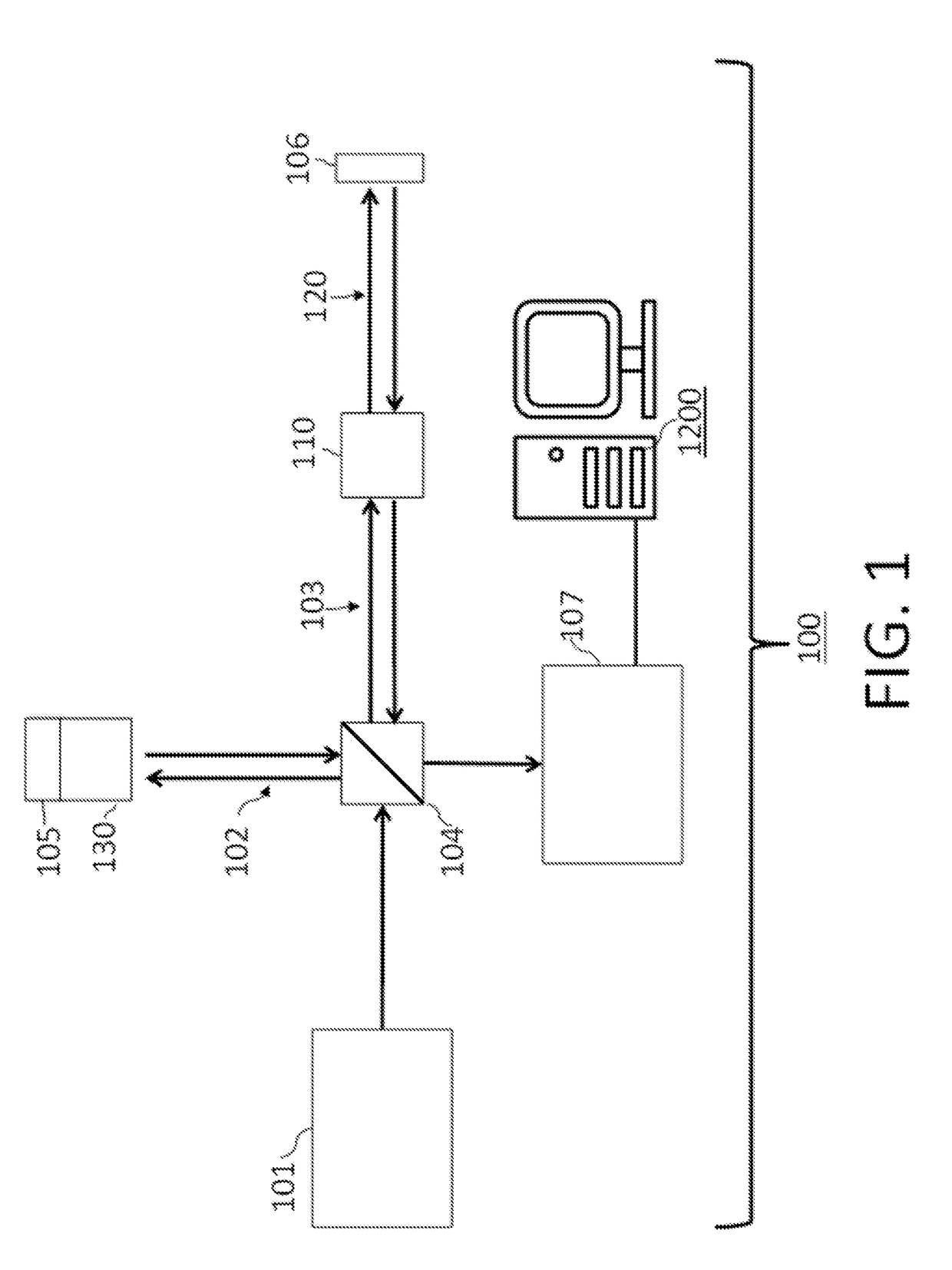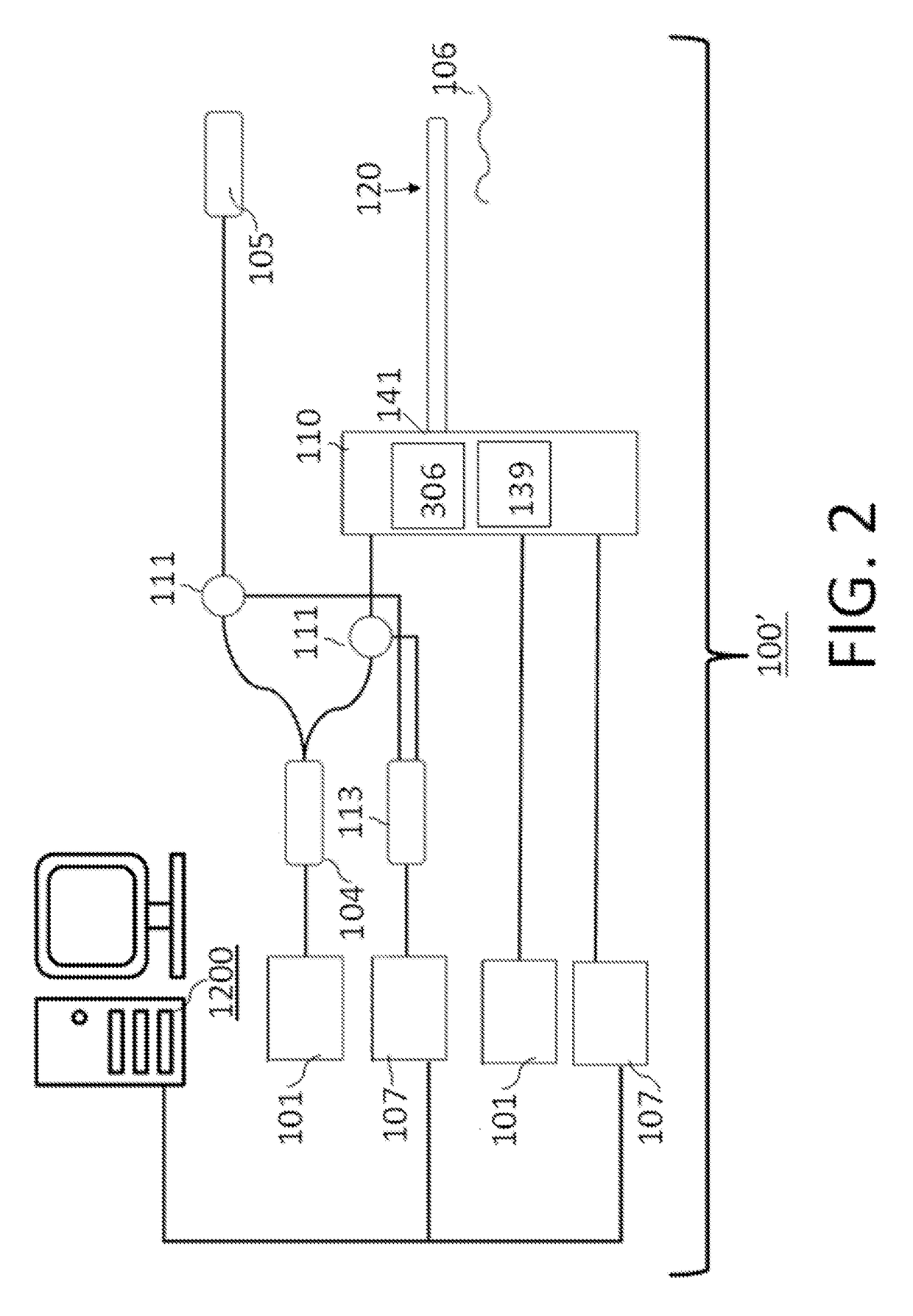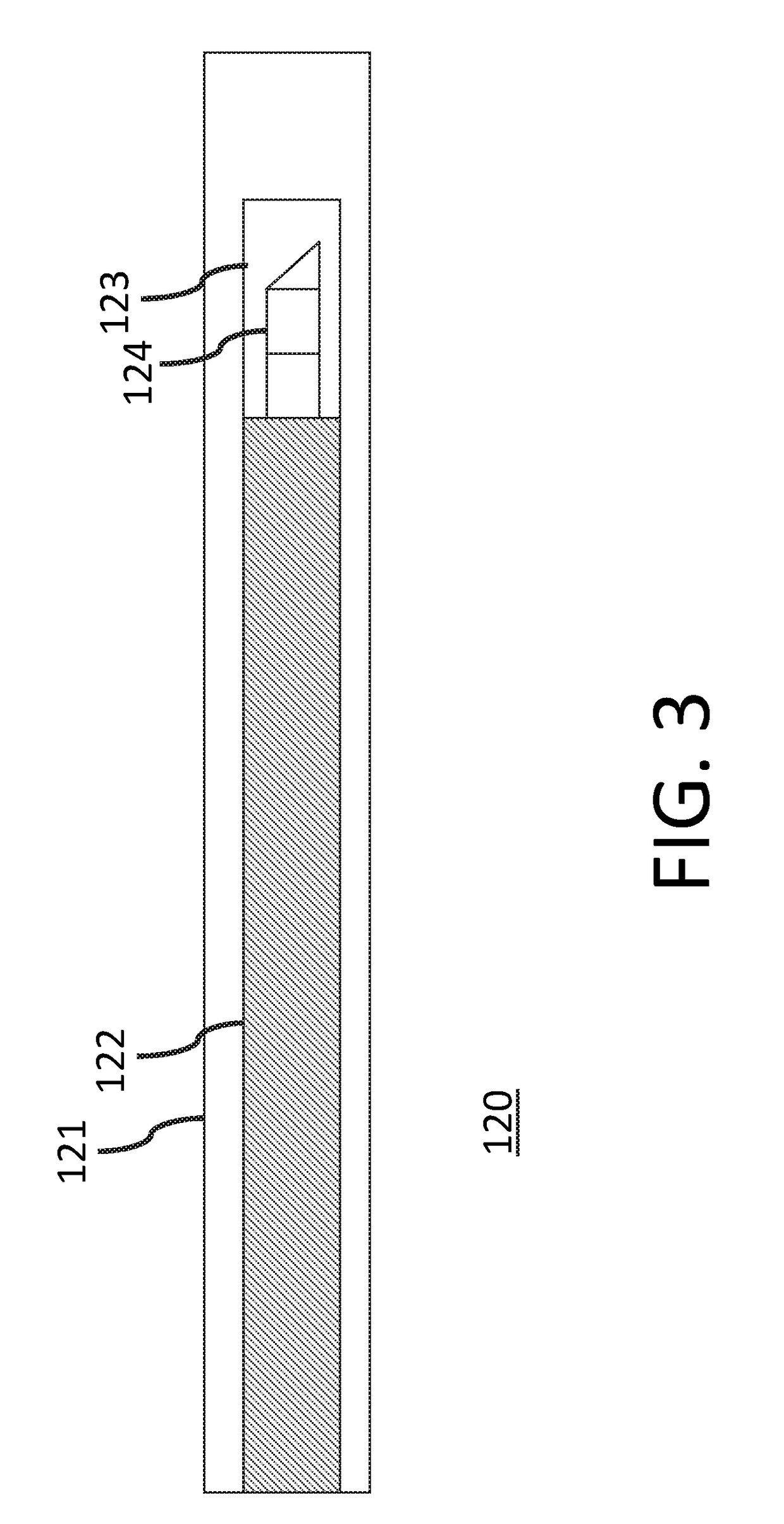Fiber optic rotary joints and methods of using and manufacturing same
- Summary
- Abstract
- Description
- Claims
- Application Information
AI Technical Summary
Benefits of technology
Problems solved by technology
Method used
Image
Examples
Embodiment Construction
[0029]One or more devices, optical systems, methods and storage mediums for imaging using a fiber optic rotary joint, and one or more methods of manufacturing at least one fiber optic rotary joint and / or of manufacturing at least one free space optical beam combiner, are disclosed herein.
[0030]Turning now to the details of the figures, FIG. 1 shows an OCT system 100 (as referred to herein as “system 100” or “the system 100”) which operates to utilize an OCT technique with optical probe applications in accordance with one or more aspects of the present disclosure. The system 100 comprises a light source lot, a reference arm 102, a sample arm 103, a splitter 104 (also referred to herein as a “beam splitter”), a reference mirror (also referred to herein as a “reference reflection”) 105, and one or more detectors 107. The system 100 may include a phase shift device or unit 130. In one or more embodiments, the system 100 may include a patient interface device or unit (“PIU”) 110 and a ca...
PUM
 Login to View More
Login to View More Abstract
Description
Claims
Application Information
 Login to View More
Login to View More - R&D
- Intellectual Property
- Life Sciences
- Materials
- Tech Scout
- Unparalleled Data Quality
- Higher Quality Content
- 60% Fewer Hallucinations
Browse by: Latest US Patents, China's latest patents, Technical Efficacy Thesaurus, Application Domain, Technology Topic, Popular Technical Reports.
© 2025 PatSnap. All rights reserved.Legal|Privacy policy|Modern Slavery Act Transparency Statement|Sitemap|About US| Contact US: help@patsnap.com



